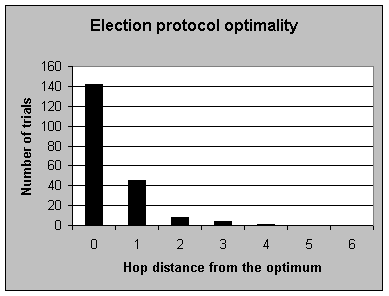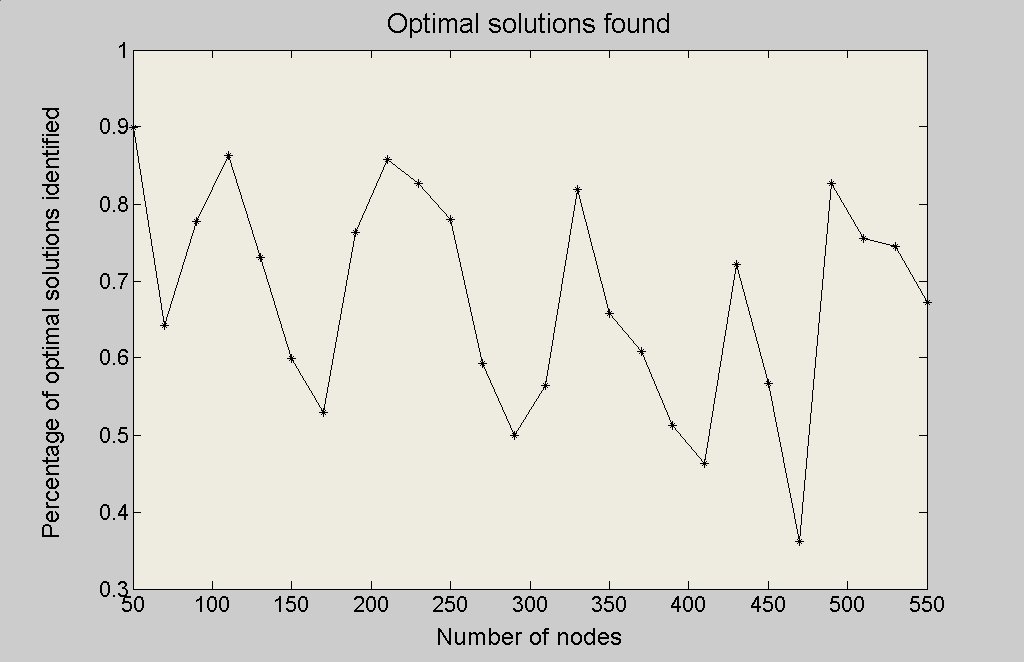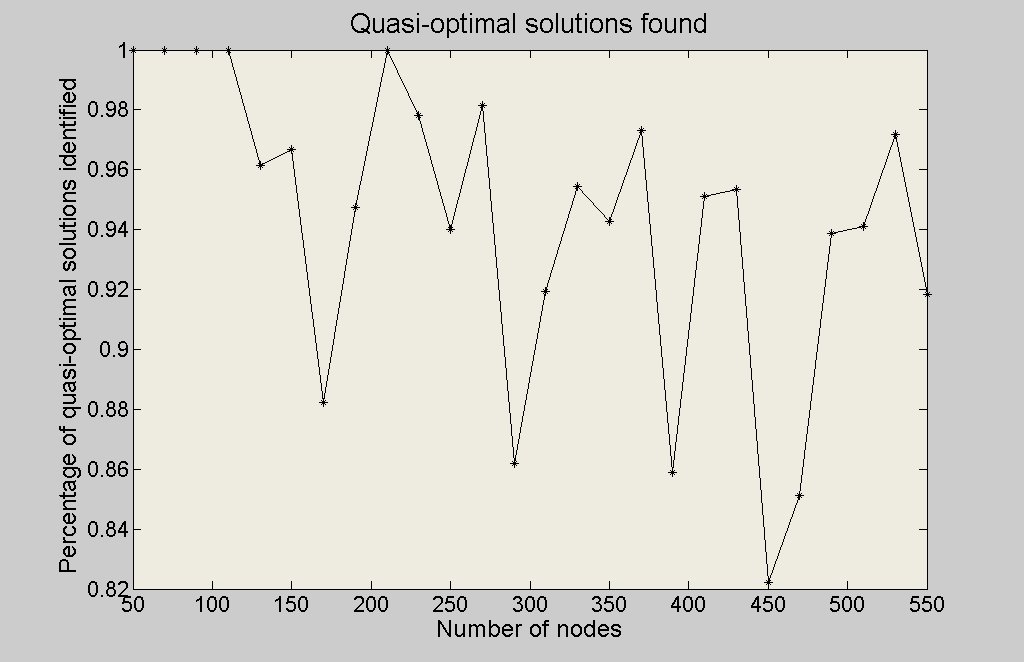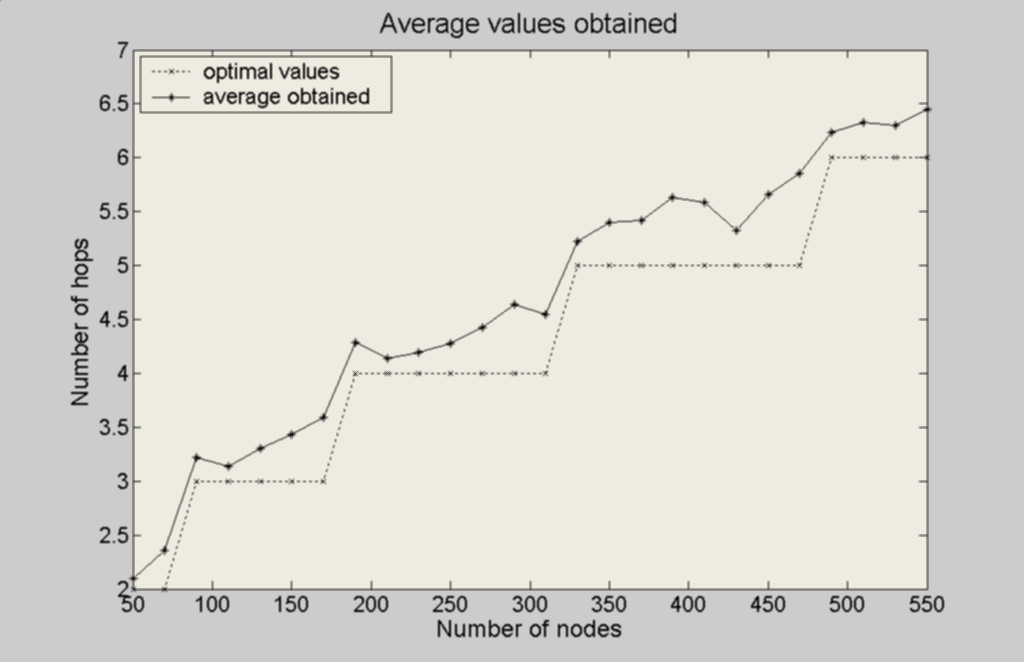
Protocol Accuracy |
By keeping unchanged the parameters reported in Manager Election Results , we tested also the optimality of the Manager Election Protocol. We measured the difference between the optimum solution and the one eventually obtained using the proposed protocol over 200 experiments. In other words, we found which was the optimum solution for the 550 nodes scenario and measured its value (6 hops from the farthest nodes). Then, we ran our algorithm 200 times, starting each election from a different node. The figure depicts the results we obtained.




